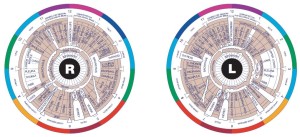BRIEF HISTORY OF THE IRIDOLOGY
The history of diagnosis through the iris goes back to the dawn of civilization. It is interesting to know how 400 years BC, and Hippocrates was convinced that detailed observation of the eye, particularly the iris could reveal important information about the health status of paciente. In the third century BC, Philostratus said “the nature of human beings is recognized by the eyes. “Later Philippus Meyens in his book “Medical Chiromática” written in Dresden, Germany, in 1670, said of the iris: “At the top is the head, stomach have a close relationship with it, can be found all stomach diseases reflected from inside the eye.
The right part of the eye shows the status of all organs which are on that side of the body, including the liver, right kidney, etc.. on the left side of the eyes may be members that are on that side of the body, ie the heart, spleen, reflected in particular addition or depletion impotence. The bottom of the eyes reflect the genitals, intestines and kidneys, from the analysis can be defined colic, jaundice, kidney, gallbladder diseases and venereal. These signs are composed of arteries, blood streaks and spots on the eyes. eyes When there are too many spots and lines, this means that the human body is sick. red spots or lines mean warm blooded white spots indicate watery blood … “.
( CLICK THE IMAGE TO DOWNLOAD THE EYES CHART)
The numerous investigations by eminent Iridologists as B. Jensen, Bourdiol, J. Deck, etc., Have shown that the iris responds to any state or condition that is occurring in the body, both the anatomophysiological and psychologically. Similarly defined in the upper head is reflected iris and its various parts and organs, whereas in the lower region are represented genitals, kidneys, gall bladder, the lower limbs and other organs.

